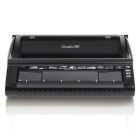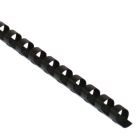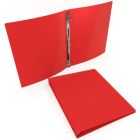Make a Great Design Portfolio
Having a nice-looking design portfolio is vital to securing work as an artist. Here are a few tips on how to create a great one.
Planning:
Give some thought as to what kind of portfolio you want to create. For in-person interviews you will want to have a nice-looking hard copy booklet with your resume and clips. Have some extra copies of some things that you can leave behind. IF you are trying to drum up work on your own, you'll want to have a personal website that includes a PDF version. You may also want to have your portfolio on CD or DVD for mailing purposes.
What to Include:
You don't want to overstuff your book, but you do want to make sure that you include what you consider to be your top of the line work (you may want to gather some feedback on this too). If you have worked in many media, include as many as you feel necessary. In general, the more well-rounded you appear, the better, though if you are trying to get work as a photographer, your prospective employer may not be interested in your sculpting work.
No matter how prolific you have bee, you should keep in mind that you will in all likelihood have a very limited time in which to show your wares. It is hard to fix on a number, but as a general rule you probably will not want to include any more than fifteen pieces in your portfolio. When it comes to choosing which work will go into your book, you may want to enlist the help of some trusted friends and colleagues. That is unless, of course, you are just starting out and have a limited number of works to show. Then go ahead and throw the book at them.
If the quantity of your work is limited, you can consider showing some pieces in various stages of completion, to exhibit your process a little bit.
Putting it Together:
Carefully matte the pieces you are going to include onto black matte paper or another suitable card stock. Consider laminating the pieces or at the very least, make sure that they are adhered to the matte extremely well so there will be no curling, etc.
You should choose a binding style that allows for updates and modifications at a moment's notice. For this purpose, perhaps, say, a perfect bound hardcover book might not be the way to go. There are a number of other types of binding such as Pro-click that are well suited to this kind of document. Take a look around online or make a visit to your local print shop to explore your options. Depending on the type of work you are showcasing, an art shop might provide some solutions as well.
As previously stated, you really should have your work viewable online as well. See if your name is still available as a URL, grab it, and if not, use your name plus the word "artist" or something like that. Register the name, get some hosting, and either find someone who has experience with artists to help build your site, or use one of the many templates out there to do it yourself.









